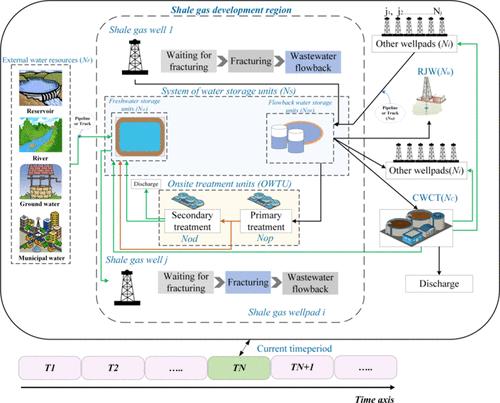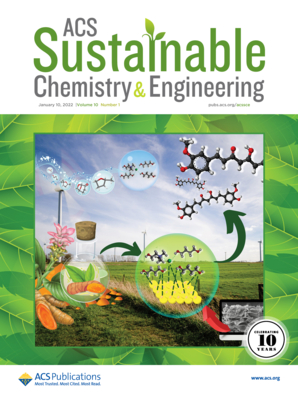Optimization and Analysis of Holistic Wastewater Reusing and Treatment Strategies in Shale Gas Hydraulic Fracturing: A Case Study in Sichuan, China
IF 7.1
1区 化学
Q1 CHEMISTRY, MULTIDISCIPLINARY
引用次数: 0
Abstract
With the evolution of hydraulic fracturing technology, shale gas development in China’s Sichuan region has become commercialized and highly active. This process consumes a substantial amount of water, currently primarily sourced from rivers and the direct reuse of flowback water. However, there is a lack of systematic water resource management, leading to high water usage per well and potentially significant adverse impacts on the regional ecosystem. This paper proposes an optimization-based water management model for shale gas development, focusing on total dissolved solids (TDS) as the key pollutant. The model considers three wastewater treatment methods: onsite treatment, commercial treatment centers, and reinjection wells, along with wastewater reuse among well pads. The model accounts for geographic factors, treatment capacities, and wastewater composition, ensuring a comprehensive approach to wastewater management in shale gas development. A case study was conducted on three well pads in the Weiyuan shale gas block in Sichuan. The results show that onsite desalination and wastewater reuse between well pads can significantly reduce water management costs and freshwater consumption. Due to geographic factors, such as the mountainous terrain and distance from existing treatment facilities, commercial treatment centers and reinjection wells are not suggested. The average optimized single-well freshwater consumption in Weiyuan is 15,078 m3, which is comparable to the Eagle Ford site’s average of 16,100 m3 in Texas, USA, but significantly lower than the average of 24,415 m3 in Sichuan.

求助全文
约1分钟内获得全文
求助全文
来源期刊

ACS Sustainable Chemistry & Engineering
CHEMISTRY, MULTIDISCIPLINARY-ENGINEERING, CHEMICAL
CiteScore
13.80
自引率
4.80%
发文量
1470
审稿时长
1.7 months
期刊介绍:
ACS Sustainable Chemistry & Engineering is a prestigious weekly peer-reviewed scientific journal published by the American Chemical Society. Dedicated to advancing the principles of green chemistry and green engineering, it covers a wide array of research topics including green chemistry, green engineering, biomass, alternative energy, and life cycle assessment.
The journal welcomes submissions in various formats, including Letters, Articles, Features, and Perspectives (Reviews), that address the challenges of sustainability in the chemical enterprise and contribute to the advancement of sustainable practices. Join us in shaping the future of sustainable chemistry and engineering.
 求助内容:
求助内容: 应助结果提醒方式:
应助结果提醒方式:


